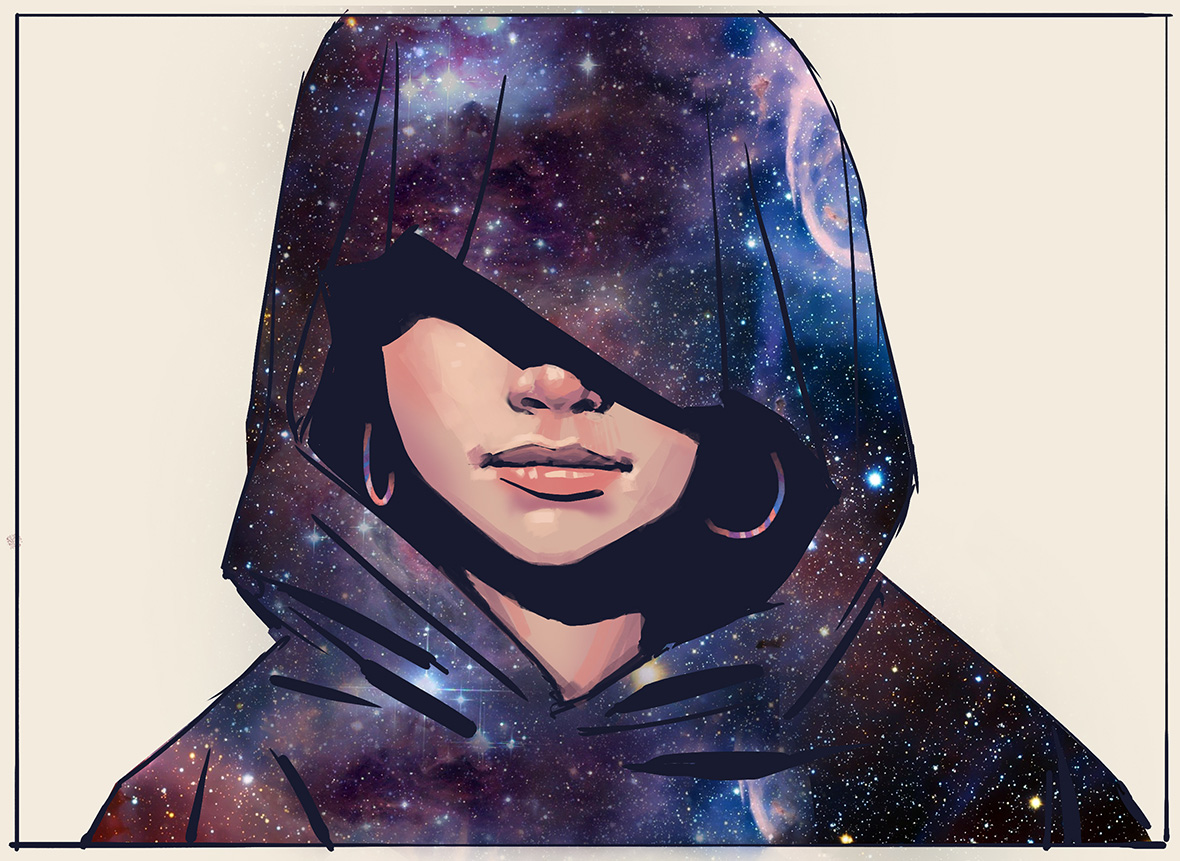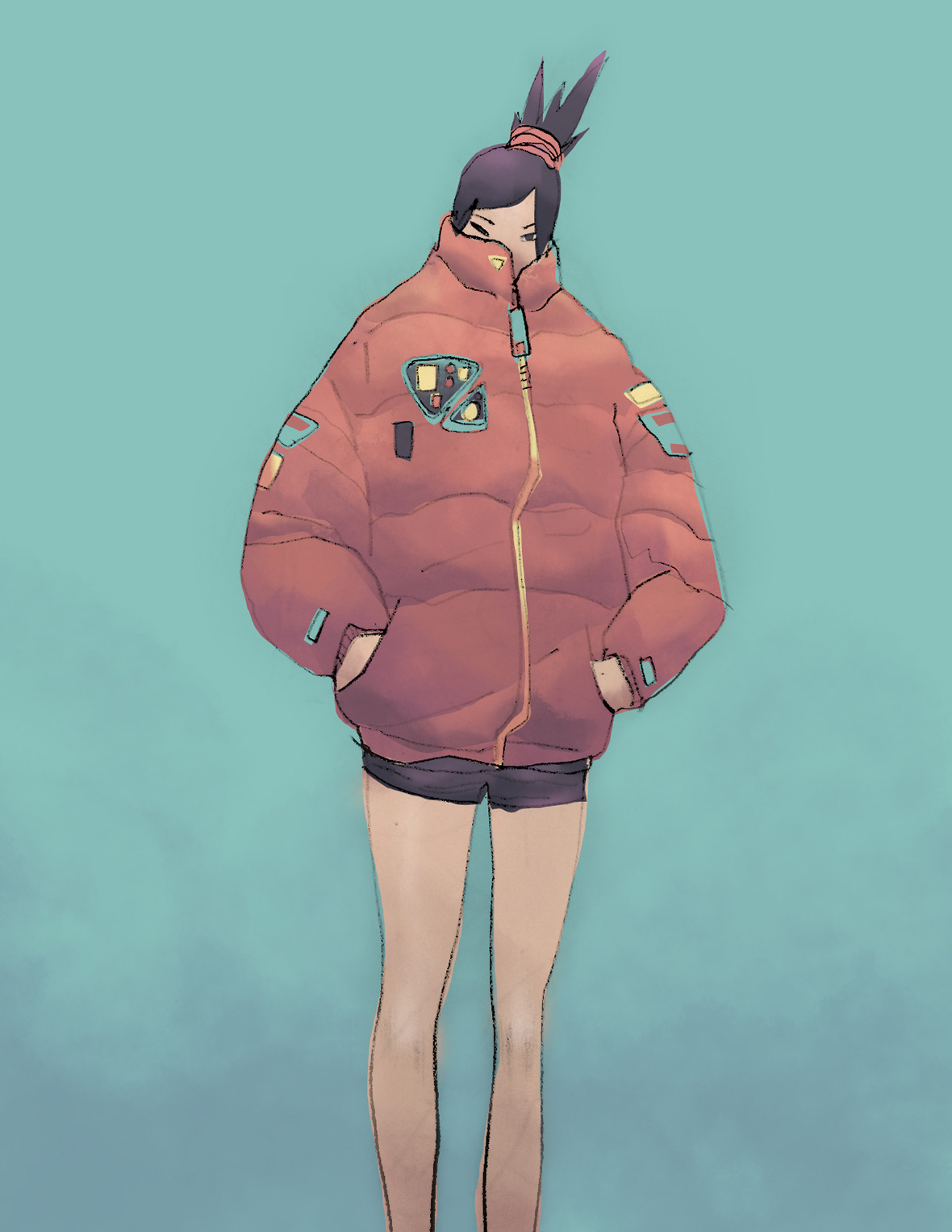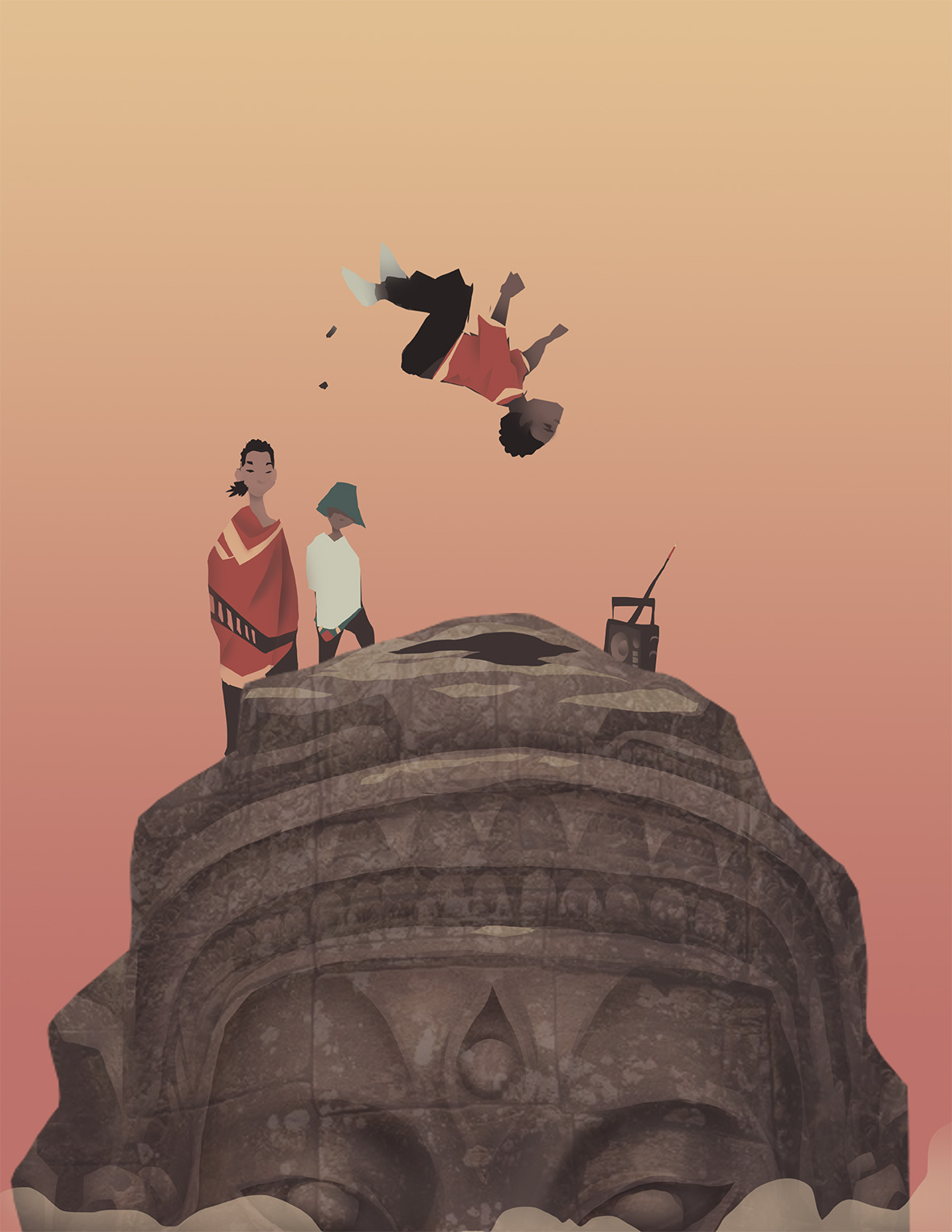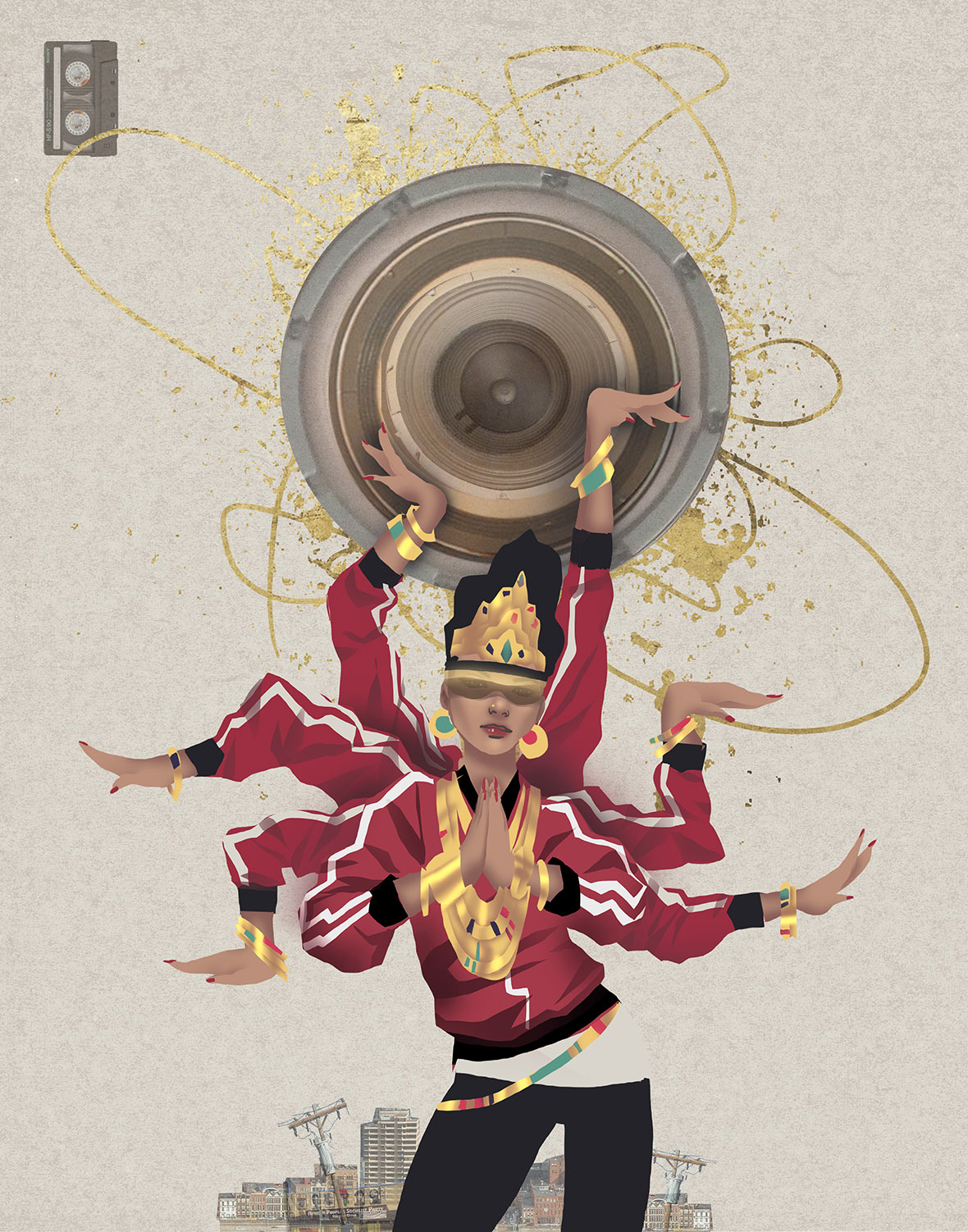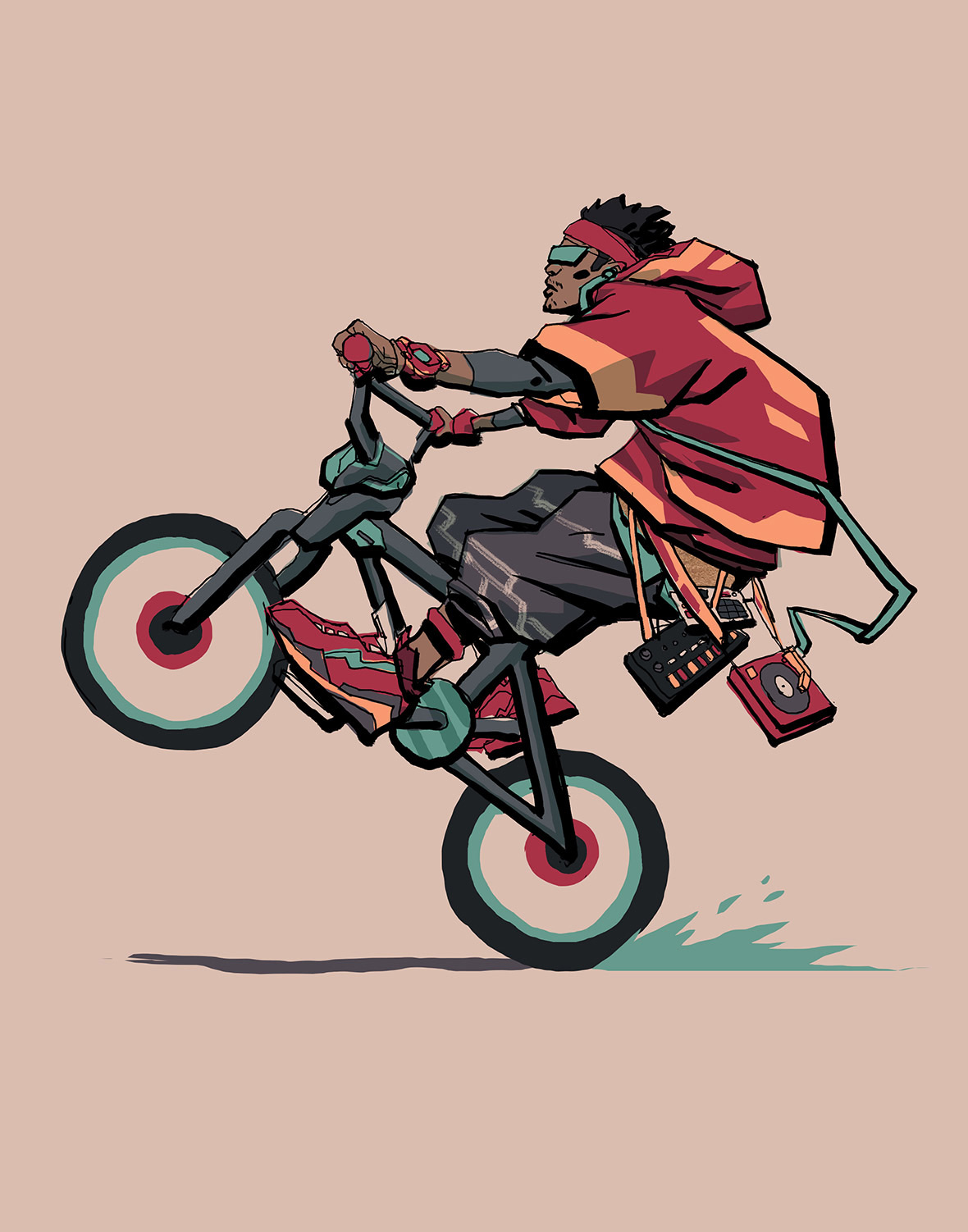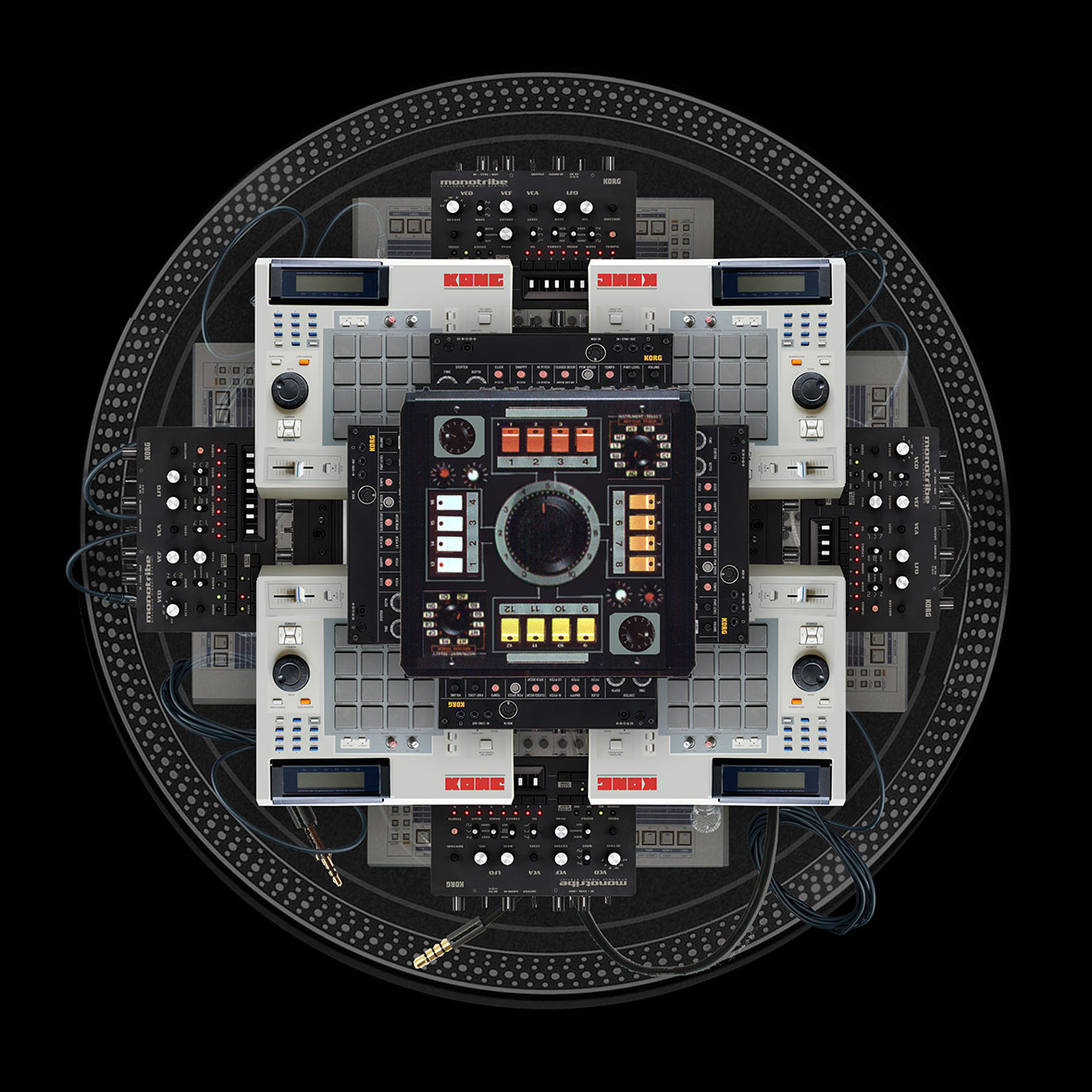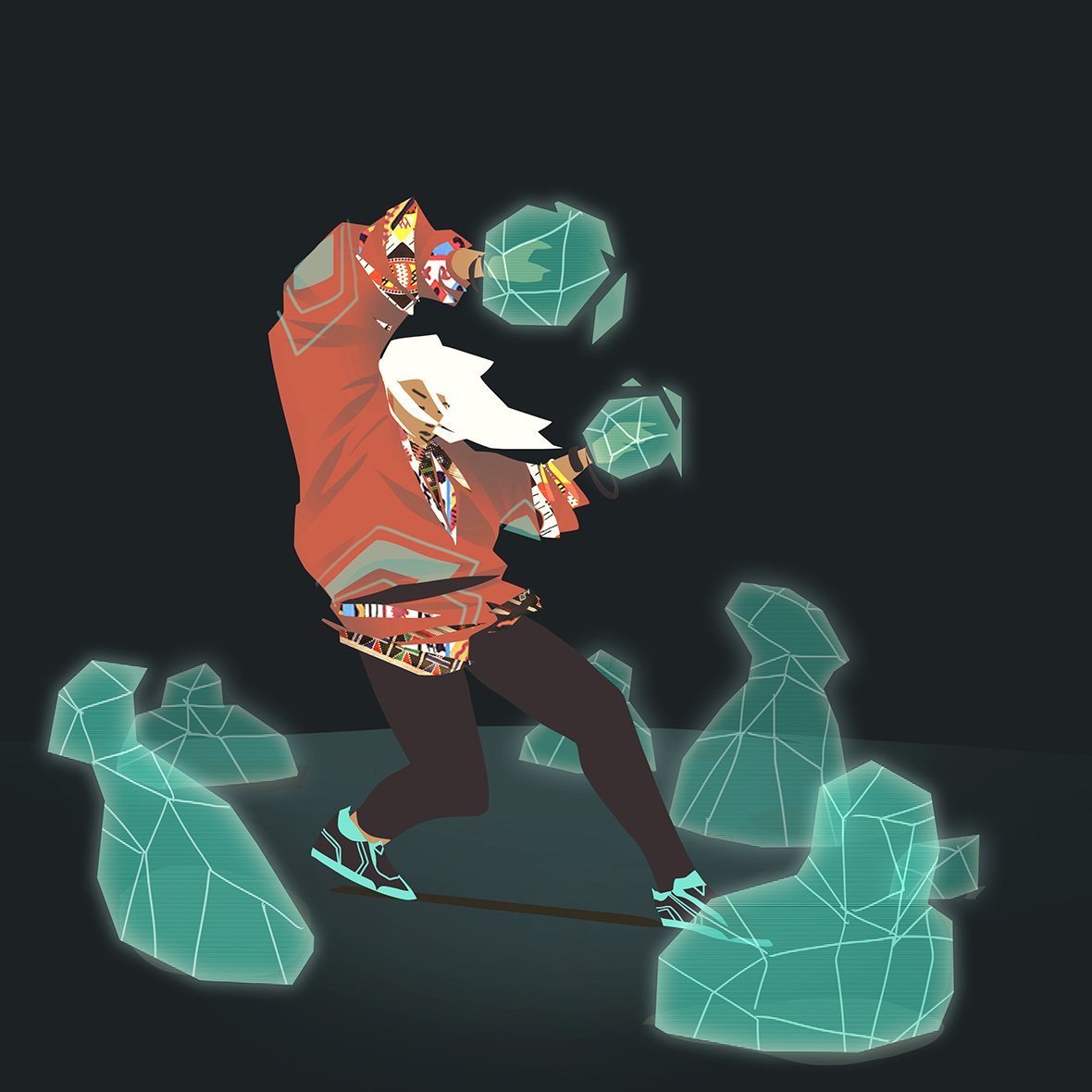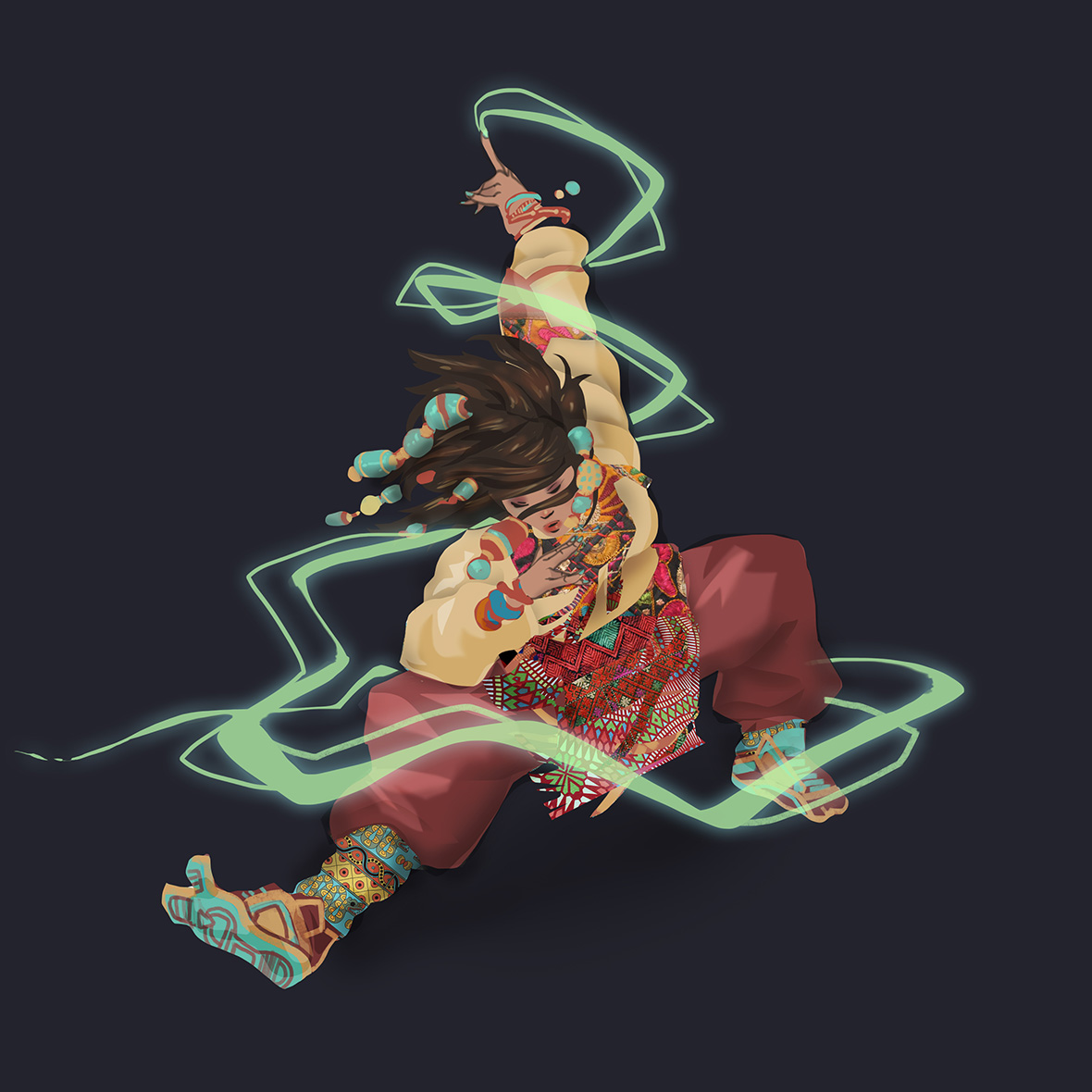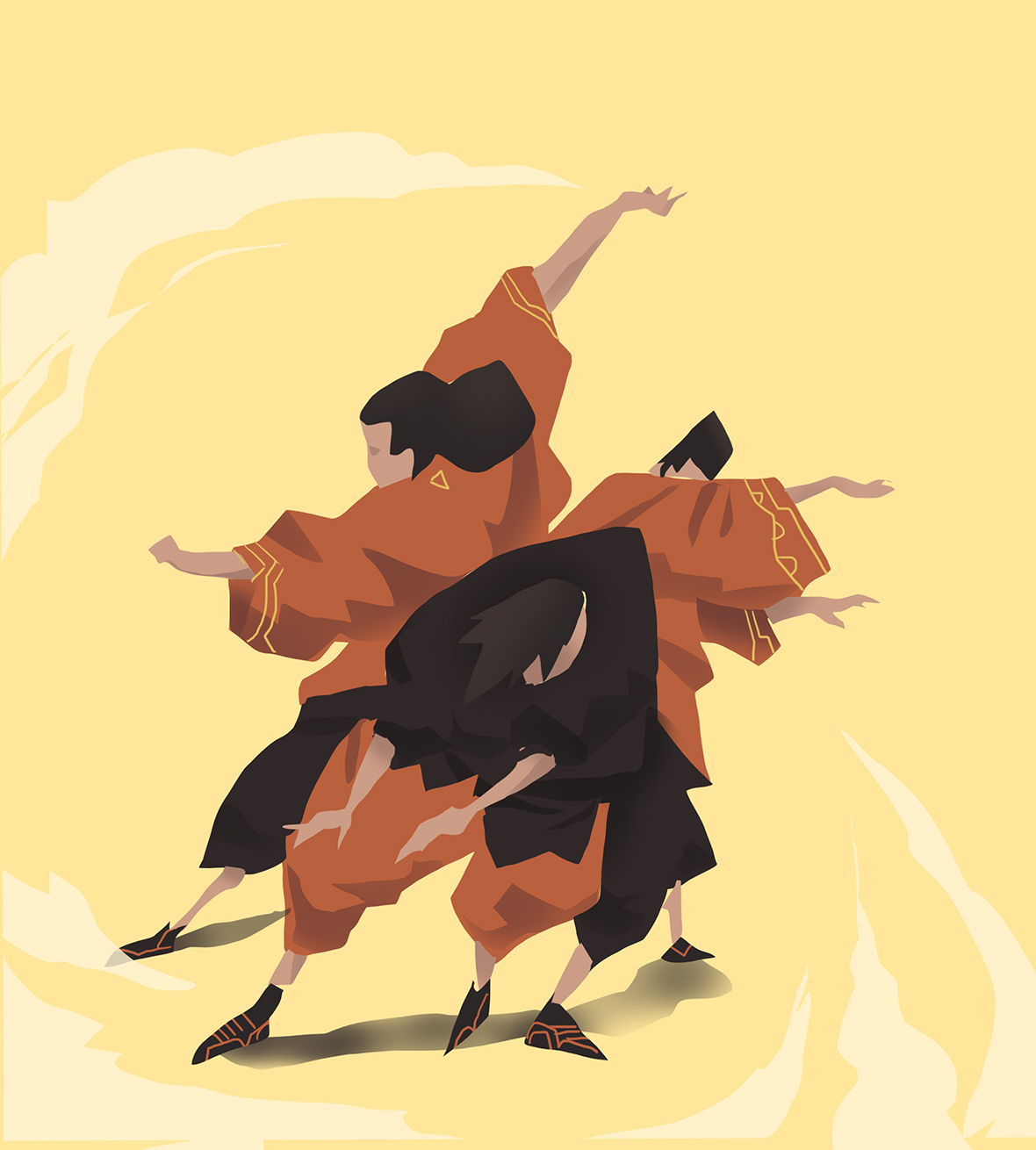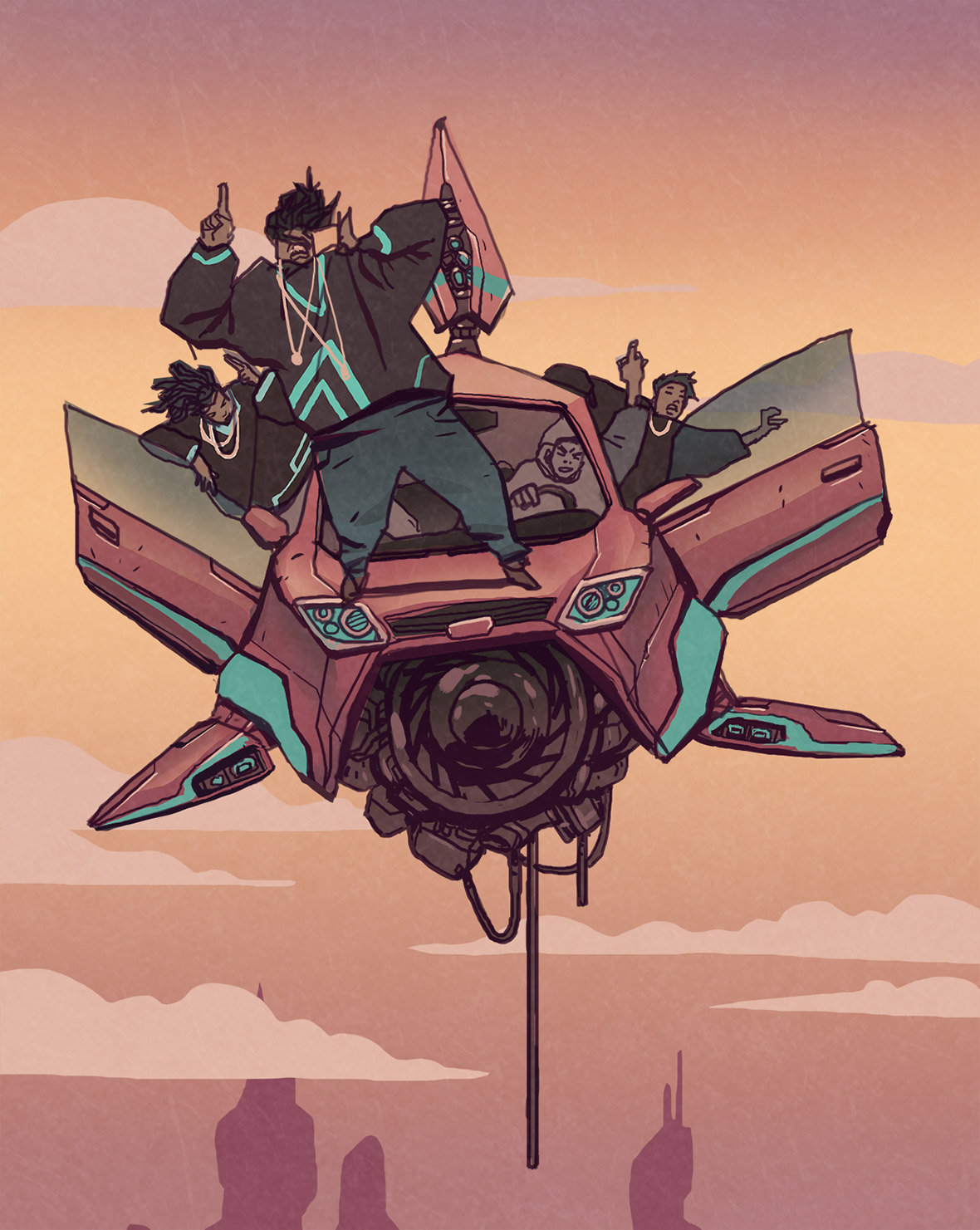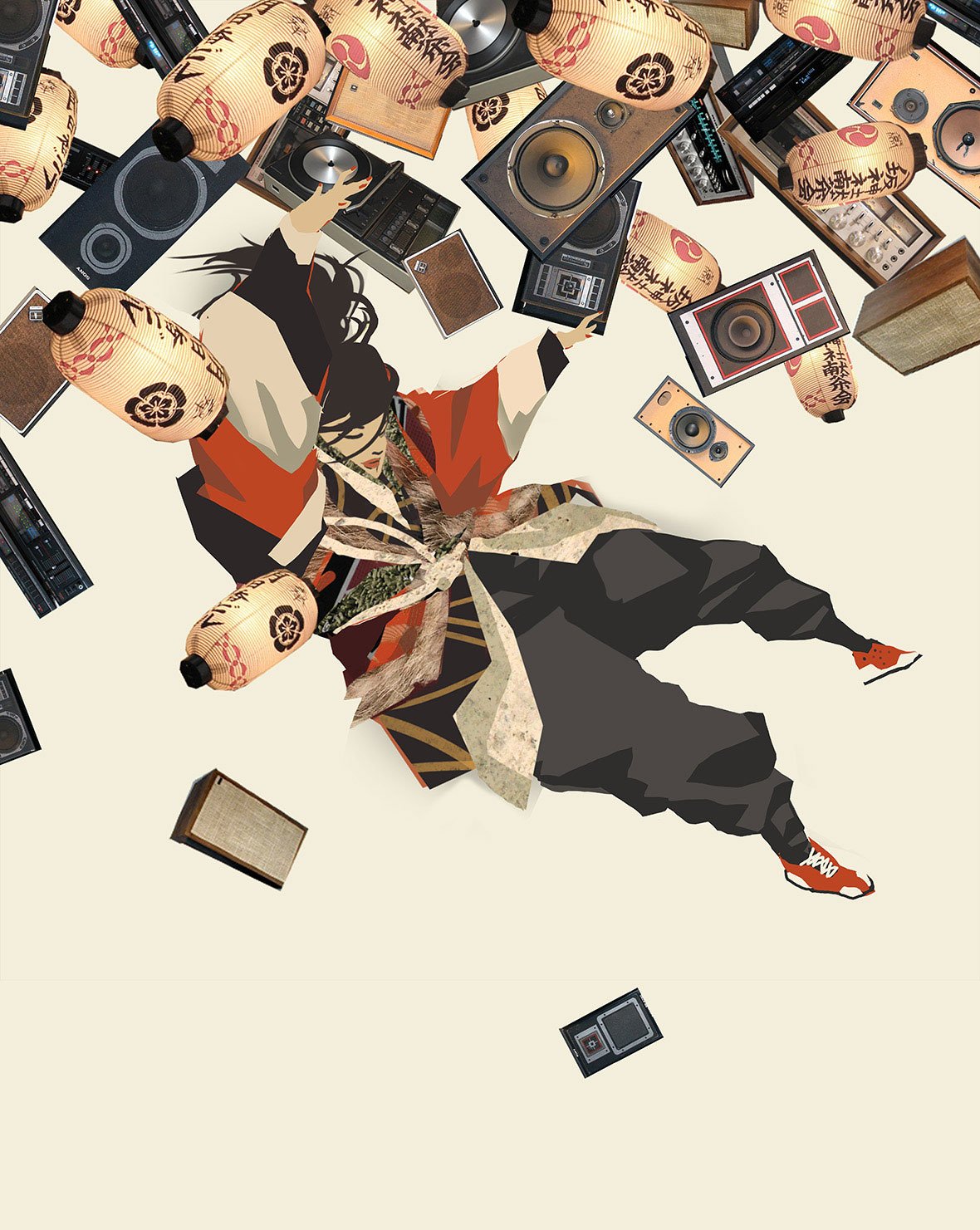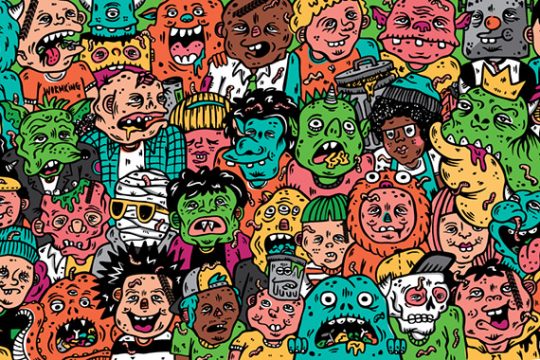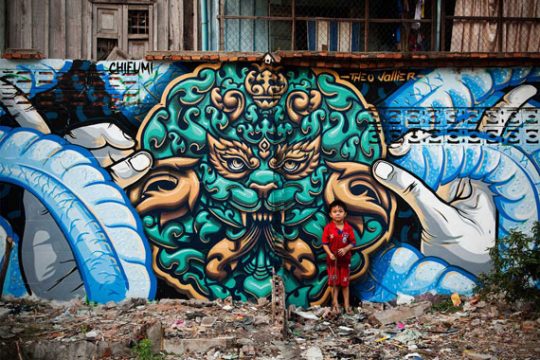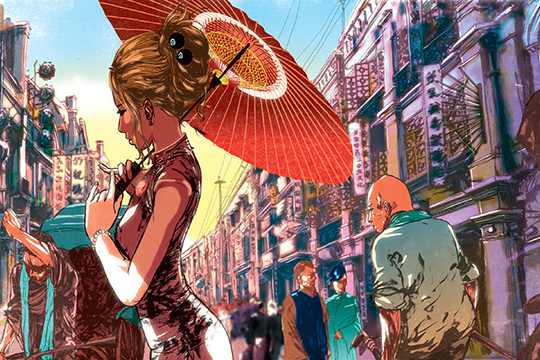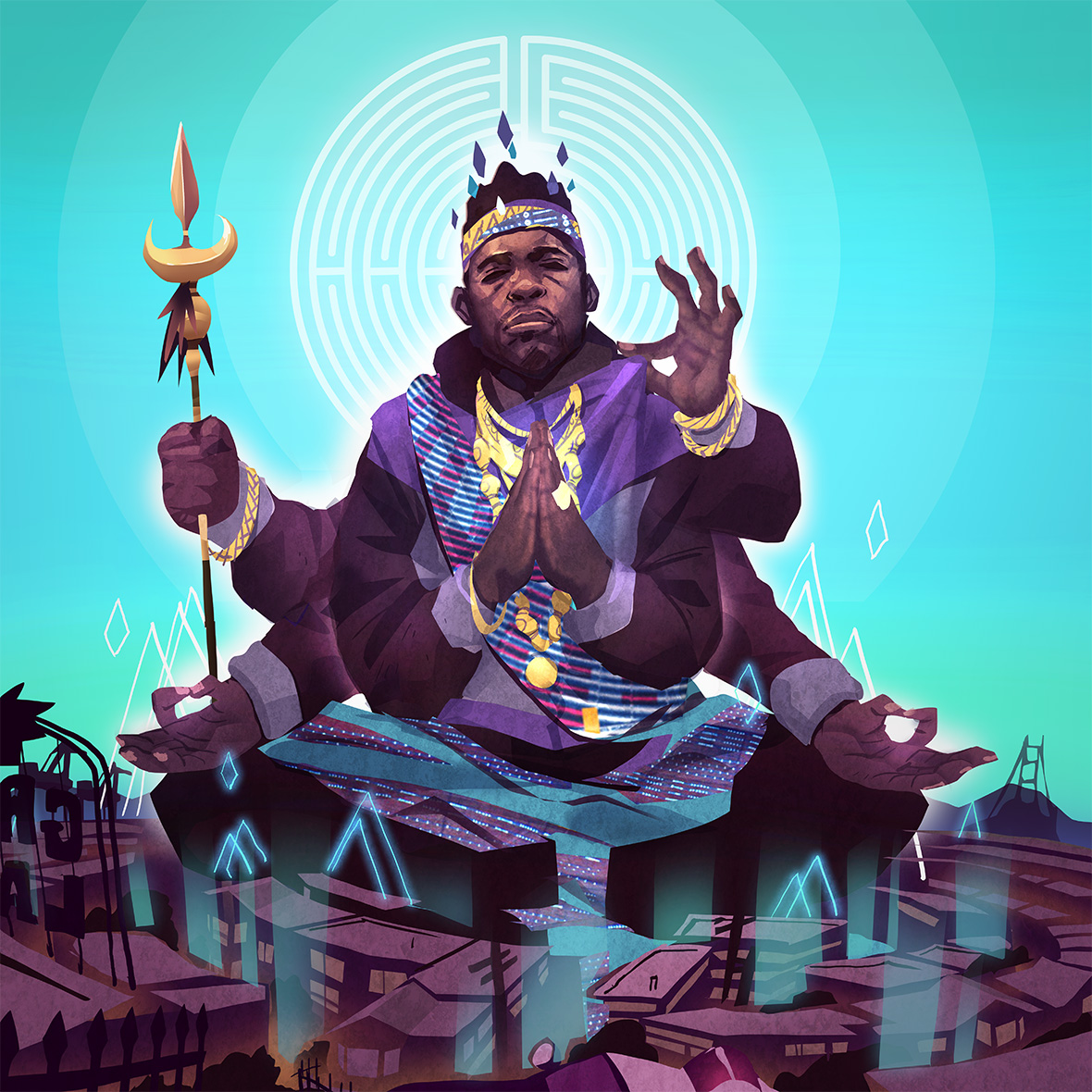
Kenny Kong is a Chinese American illustrator and video game artist based in San Francisco, California. His illustrations bring us into a world that transcends place and space, blending together diverse cultural, spiritual, and religious elements to create images that exist between the past, present, and future. Recently, Kenny created the cover art for American hip-hop group Zion I’s newest album, The Labyrinth. In the interview below, he shares with us his thoughts on culture, creativity, and how hip-hop has influenced his work and philosophy.
Kenny Kong是来自旧金山的美籍华人插画师和游戏设计师。他的插画带领我们进入一个穿越地理和空间的世界,混合不同文化的,精神的和宗教的元素,去创作存在于过去,现在和未来之中的图像。最近,他也创作了美国嘻哈组合Zion I的新专辑《The Labyrinth》的封面插画。Kenny跟我们分享了一些他对于文化,创意和嘻哈文化的想法,以及这些如何影响他作品和人生观。
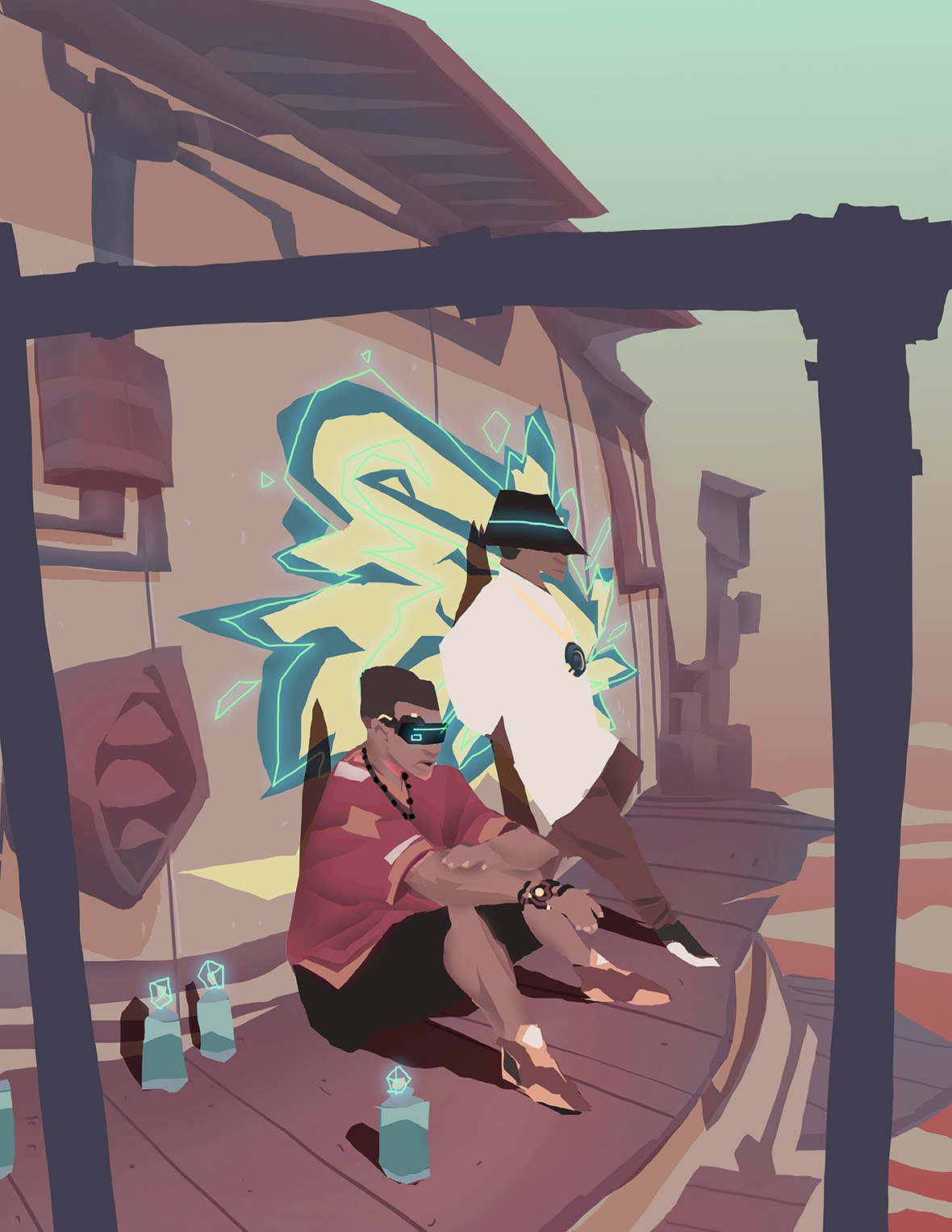
Neocha: How did you get started as a visual artist?
Kenny: I got started the same way most kids get started – drawing Ninja Turtles and Voltron in front of the TV. However, when of all the other kids moved on to basketball or riding bikes, I just kept drawing. I draw my ass off, even to this day. It’s become a way of relaxing and daydreaming. I get really irritable when I don’t sketch for a few days. Thankfully, all that drawing has opened a lot of doors for me professionally. I’ve been working as a video game artist for six years now, in addition to doing freelance illustrations and designs.
Neocha: 你是怎么成为一名视觉艺术家的?
Kenny: 我就像大部分孩子一样,从对着电视画一些忍者神龟和战神金刚开始。但是,当其他小孩跑去打篮球和骑单车时,我还在继续画。直到今日,我每天都玩命儿的画,庆幸地是我画的这些画,也为我创造了很多专业机会。我已经从事游戏设计师的工作六年了,偶尔也做些自由插画师和设计工作。
Neocha: Can you tell us about how hip-hop and growing up in the Bay Area has influenced your work?
Kenny: I grew up in Oakland, California and the first song I ever memorized was “The Humpty Dance” by the Digital Underground. In Oakland, you couldn’t go anywhere without hearing Too $hort being blasted from car speakers, or kids doing MC Hammer dances on street corners. I learned how to moonwalk on the school playground in kindergarten. Hip-hop was all around me as a kid, and I soaked it all in.
It wasn’t until middle school that I saw b-boying live and up close. It was at a school dance somewhere – dark, with a bunch of sweaty teenagers awkwardly standing around. In the middle, a circle had formed, and when I peeked in, I saw these older guys busting windmills and flares and I was mesmerized. They were like superheroes, flying on the floor. There was no internet at this time, so I didn’t even realize these moves existed or were even possible. It was incredible – it was like watching the X-Men, except they were Filipino and wore baggy clothes. I quit basketball and started b-boying after that. I love the energy of the dance and how it relates to the music. Getting down in a circle, feeling the rhythm of a funky ass tune, and expressing that energy through your body is one of the best feelings in the world. It’s like poetry in motion and I try to capture a lot of that essence in my visual work.
Neocha: 能跟我们讲讲嘻哈文化和在旧金山湾区长大对你的作品有什么影响吗?
Kenny: 我在加利福尼亚奥克兰长大,我能记起的第一首歌就是Digital Underground的《The Humpty Dance》,在奥克兰,大街小巷都能听到汽车喇叭里放着Too $hort的歌,或者孩子们在街角跳着MC Hammer的舞步。我在幼儿园的游乐园里学会了怎么跳月球漫步。嘻哈陪伴着我长大,我也对其耳融目染。
我在中学的时候第一次近距离看到跳街舞的人,是在一个学校的舞会,黑漆漆的,一群满身大汗青少年有些尴尬地站在一起。人群中,站成一圈,我偷偷看到一些年龄稍大的孩子正在跳很多很炫的高难度动作,让我印象深刻。他们就像超级英雄一样,在地板上飞舞。那时候还没有互联网,所以我根本不知道这些动作的存在,和竟然能够被做出来。简直是不可思议,就像看《X战警》一样,除了他们是穿着宽松嘻哈服的菲律宾人。从那以后,我放弃了篮球,转而去跳街舞。我爱街舞的力量和它与音乐的紧密相连。大家围成一圈,感受着来自带感音乐的节奏,通过你的肢体传递出的能量是世界上最棒的感觉了。像是动感中的诗意,我也在我的视觉创作中努力去捕捉街舞的本质。
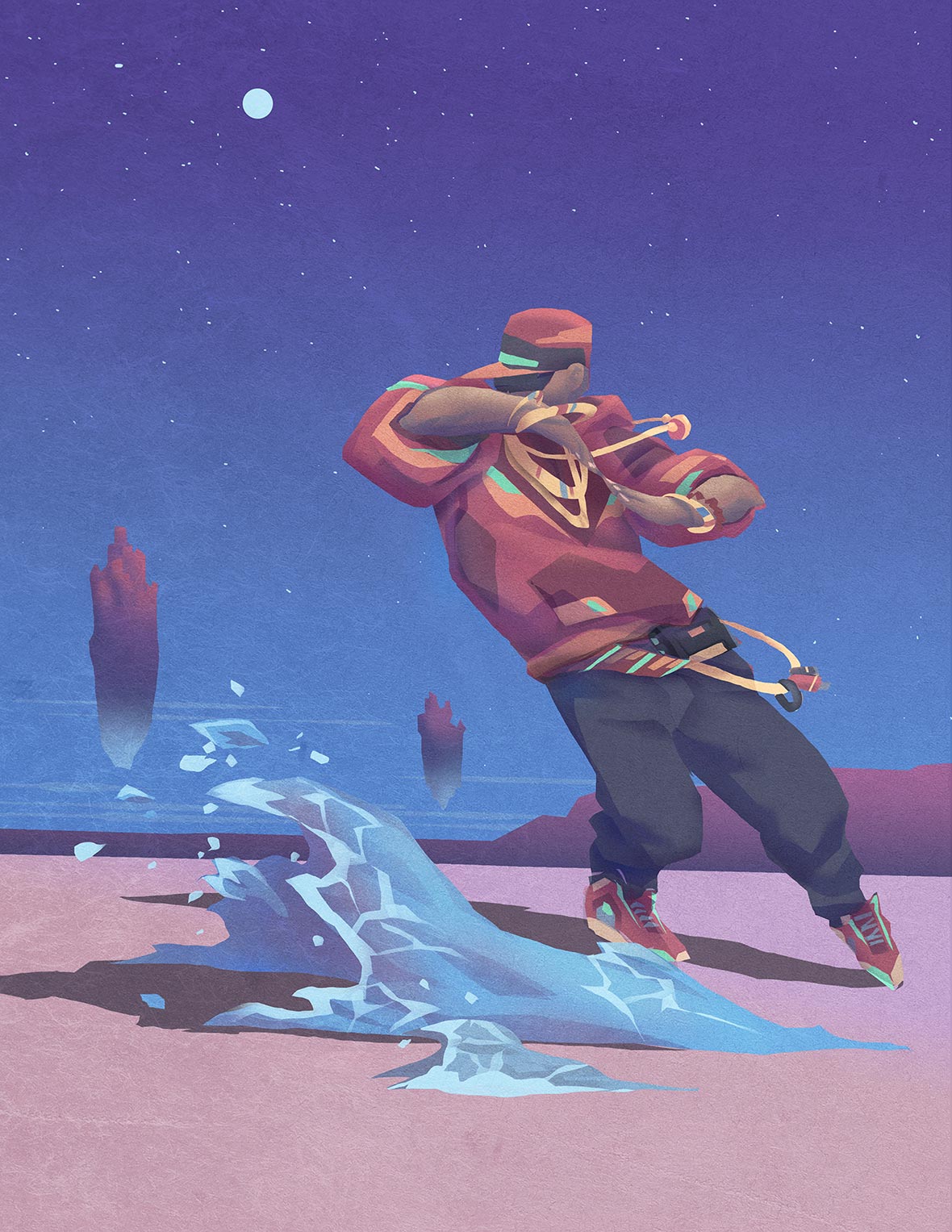
Neocha: We love the color schemes in your work. How does color inspire you, and how do you use it to express your creative vision?
Kenny: Color is great. You can take a shitty drawing and make it look good just by adding the right colors. That’s because you can create entire moods and emotional landscapes with the right use of color. With my own work, I approach color like the time of day. Early mornings are bright with some blues and yellows. I’m more of an evening person though, so my work tends to use more sunset colors, like pinks, oranges, and purples. I also like getting down in grimy night clubs, so sometimes I’ll use neon colors with a darker tone to capture that vibe. Color is complex, and I’m still figuring it all out.
Neocha: 我们很喜欢你作品中的色调。颜色是怎么启发你?你是怎么运用颜色去表达你的创意想法的?
Kenny: 颜色太牛逼了,只要加对颜色,你能把屎一样的绘画变的好看。只要用对了颜色就能让作品带有情绪。在我的作品中,我运用颜色就像时间一样,明亮的清晨是蓝色和黄色的。我是一个夜猫子,所以我的作品更多是日落般的颜色,像是粉色,橙色和紫色。我也喜欢去脏脏的夜店玩,所以我会用霓虹色和深色调去捕捉那种气氛。颜色是复杂的,所以我还在不停的研究。
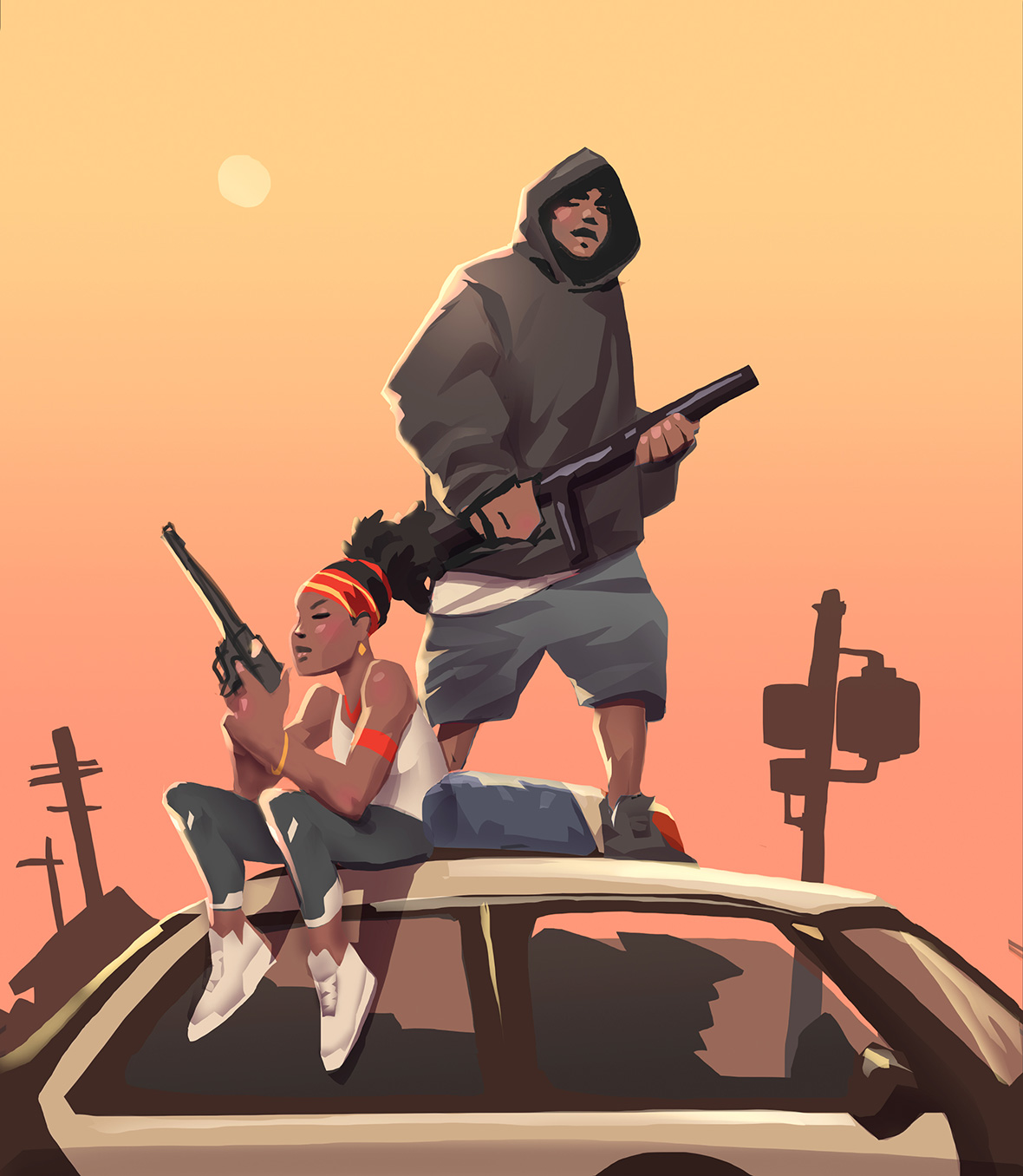
Neocha: Can you talk a little about your creative process? How is your creative process for visual arts the same or different from your process for dance?
Kenny: Like Bruce Lee says, “Don’t think. Feel!” I approach the page, canvas, and dance floor the same way, by trying to feel my way through the creative process, using intuition and spur of the moment decisions to create something interesting. Most of the time, I have some sort of inspiration going into it as well. Like Bruce Lee also said, you need emotional content. Another one of his quotes goes like, “It’s like a finger pointing to the moon – don’t concentrate on the finger or you will miss all that heavenly glory.” In my case, the moon is the initial inspiration, feeling, or idea that I’m trying to convey, and the finger is the form and technique used to convey that idea. A lot of times it’s like digging for gold. I’ll find some dope music that inspires me, and start freestyling. There’s a lot of garbage that comes out of this, but sometimes you need to dig in order to find the gold. Eventually, the good stuff emerges, and when it does, it’s like discovering Jesus or something.
Neocha: 能跟我们讲一下你的创作过程吗?你作为视觉艺术家和作为一个舞者的创作过程有什么不同吗?
Kenny: 就像李小龙讲的:“不要想,去感受!” 我对纸张,画布还是舞池的态度都是一样的,通过创作过程去感受我的方法,用直觉很即兴地去创作有趣的东西。很多时候,我好像有点灵感了,我也会开始创作。李小龙也说过,你需要有情感的内容!“就像用手指指向月亮-别只专注在手指上,不然你会错过所有迷人的壮丽。” 对我来说,月亮就是我试图去传达的最初灵感,感觉还有想法,手指就是转化想法为作品需要的技法和形式。很多时候就像掘金一样。我会听些很屌的音乐,给我找些灵感,然后就开始随心所欲的画。大多时候画出来的都很垃圾,但是有时你真的需要深挖才能找到金子。最后,好东西终究会浮现,就像发现了耶稣一样。
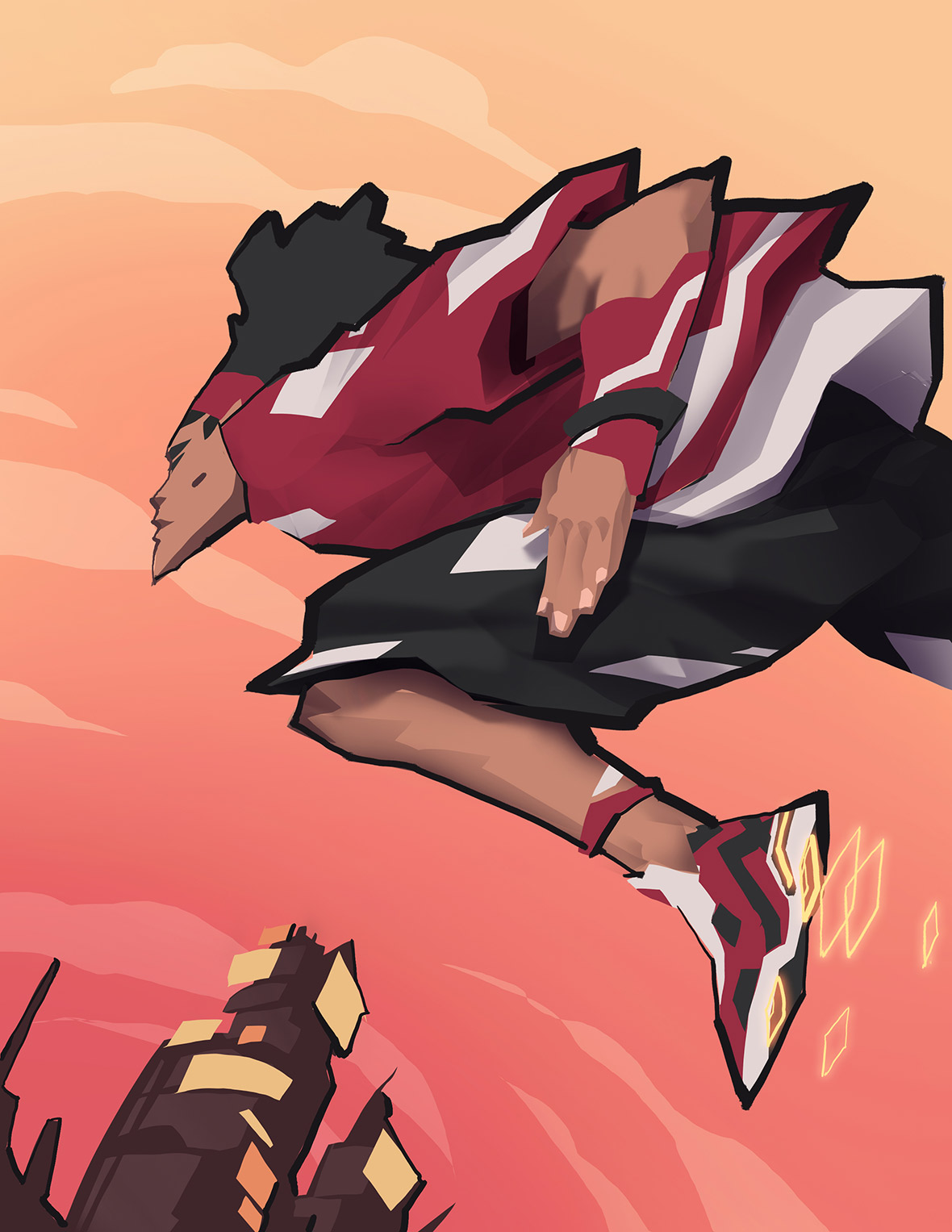
Neocha: Your work blends the traditional, the modern, and the futuristic to create worlds that are transcendent and timeless. How does your own cultural identity influence your work, and what does culture mean to you?
Kenny: Culture, to me, is the soul of the people. The values, beliefs, traditions, and styles of a group of people are all manifested through their culture. The type of music they play, their style and how they dress, the food they eat, and how they treat one another are what makes them who they are as a people. There is such richness and depth in these cultural expressions and it inspires me, endlessly.
I often think about how we are living in a specific global culture that’s becoming more and more homogenous. It has largely been shaped by a Western, colonial, and capitalist point of view that, while it’s introduced many conveniences and modern living, it has also produced an imbalanced and spiritually deficient culture. There is so much to be learned from other cultures, whether it be from hip-hop, or Chinese and Eastern philosophies, or indigenous peoples. It’s crucial to explore and learn more about these ideas in order to find a greater sense of balance and to reconnect us with ourselves, with each other, and with the world. There are many different ways to live, and many philosophies that may contain much more wisdom than the American or Western philosophy that we’re given by default.
Neocha: 你的作品混搭了传统,现代和未来的元素,创造了这些穿越且永恒的世界。你自己的文化身份怎么影响你的作品的?文化对你来说意味着什么?
Kenny:文化对我来说,是人的灵魂。不同民族的价值,信仰,传统和风格都展现了他们的文化。他们演奏的音乐,穿衣的风格和饮食,以及人与人之间的待人处事都塑造了现在的他们,这些深厚又丰富多彩文化表达不停地启发着我。
我经常思考为什么不同文化变得越来越同质化。很多文化被大量的西方化,殖民化,资本化。这确实为现代生活带来了更多的便利,但也产生了一种不平衡的且精神上缺失的文化。我们有太多可以从其它文化中借鉴的东西,无论是嘻哈文化,还是中国文化和东方哲学,甚至是土著人的文化,这些对于探索和寻找文化上更好的平衡感都是非常重要的,也是和我们与自身,与他人,与世界的一次重新对话。世界上有很多的生活法式,除了我们默认的美国的,西方的哲学之外也有很多不同的哲学思想。
